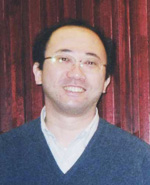- Home
- Message
Message
 I am Hitoshi Okazawa, principal investigator of the Foundation of Synapse Neurocircuit Pathology, a theme adopted for the Scientific Research on Innovative Areas-grant sponsored research project which starts from 2010. I would like to briefly explain our scientific domain and the process we went through to propose this theme.
I am Hitoshi Okazawa, principal investigator of the Foundation of Synapse Neurocircuit Pathology, a theme adopted for the Scientific Research on Innovative Areas-grant sponsored research project which starts from 2010. I would like to briefly explain our scientific domain and the process we went through to propose this theme.
It has already been over 100 years since research on degenerative diseases began, with the discovery of Alzheimer's disease. However, it has still not yet been possible to discover really effective method of treatment for this disease. It goes without saying that progress seems to be even slower for developmental disorders and mental disorders, of which identification of causative genes and elucidation of the molecular pathology lags behind. Of course, research on degenerative diseases has brought us much knowledge. The correspondence between genetic mutations and phenotypes in neurodegenerative disease is clearer than similar links in developmental disorders and mental disorders. Moreover, a large number of patients could be clinically diagnosed with a single disease entity. These reasons led us to the identification of causative genes, which accelerated understanding of the formation process of inclusion bodies and aggregate at the molecular level, beyond morphology. Furthermore, this knowledge contributes to the development of new diagnostic techniques, such as amyloid imaging. On the other hand, however, we have realized that in cases of progressed lesions, we cannot expect recovery from symptoms even if aggregates are removed. We should now focus on various dysfunctions of neurons, and the background to these phenomena, as new problems to solve. Equally, the process from dysfunction to cell death has not yet been clarified. Since the brain is a circuit in which a neuron functions as a device, it is evident that the vulnerability of the circuit and the synapses which are in charge of contact between devices is one of the most important reasons behind the decline of the brain machine's performance.
This scientific research is an ambitious challenge, one that aims, in just five years, to elucidate how dysfunction of neurons connects to that of synapses, and how it affects the vulnerability of the overall circuit. Of course, we cannot bring all such mechanisms to light, but we would like to make some solid prototypes. These prototypes can then become a basis for effective methods of treatment which can stop the progress of symptoms of brain diseases in early stages and promotes recovery. We would like to invite many brain disease researchers and scientists of basic medicine to participate in this research, and to pioneer a new frontier for this field together by bringing many varied ideas together.
Hitoshi Okazawa, August 2010

